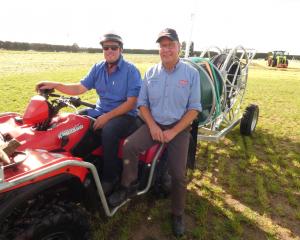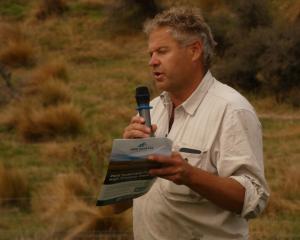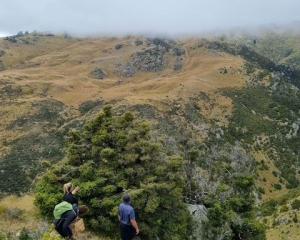Five government organisations have been issued work orders in the past eight months as the Otago Regional Council responds to reported "plagues" of rabbits in parts of the region.
Environmental implementation manager Libby Caldwell said yesterday the council could not name the five government organisations that received "request for work" notices because the compliance process was under way.
However, she confirmed city or district councils were among those found to be non-compliant.
More broadly, Mrs Caldwell said in the 11 months between February last year and January this year 184 rural properties were inspected and 61 properties were found to be non-compliant.
Non-compliant properties were instructed to follow the region’s rabbit control rules, she said.
While rabbit control was the land occupier’s responsibility, the council had biosecurity staff who were available to give advice.
"ORC’s entire biosecurity team work in the rabbit space, including two community co-ordinators who facilitate the community programmes."
The council did not say where "plagues" of rabbits had been reported in Otago.
Earlier, in a report to the council’s environmental implementation committee in February, staff said, generally, the parts of the region with increasing rabbit numbers were the northern end of Lake Dunstan, through Queensberry and Luggate.
Rabbit numbers were decreasing in South Otago, Ida Valley and the mid Clutha Valley, the report said.
Typically rabbit densities were highly variable across Otago, the report said.
"While some locations have definitive trends, other locations show densities that vary year on year."
The council statement yesterday said "solid rabbit control progress" was being made in most Otago high country areas, but "the spread of subdivisions and creation of peri-urban areas (those transitioning from rural to urban development) around Central Otago remains problematic".
Mrs Caldwell said work at the council included increased rural monitoring, and night counts; monitoring for smaller properties; thermal imagery; community surveys and engagement.
The council’s plan for rabbits included assessing "the feasibility of using various monitoring methods effectively on smaller properties", she said.
"Using contractors there are several options for landowners, such as fumigation, burrow destruction, and ferreting for low-density areas, or using poisons while employing risk mitigations for pets."
In February, the Otago Daily Times reported Otago regional councillors asked staff to look into the possibility of removing an introduced virus, fatal to rabbits, off a national unwanted organisms list.
Mrs Caldwell yesterday confirmed the council was investigating if it was viable to remove rabbit haemorrhagic disease virus (RHDV) from the unwanted organism list, which could pave the way for its reintroduction into areas where it may not be present in Otago, but not necessarily from new imports.
HAMISH.MACLEAN@alliedpress.co.nz














